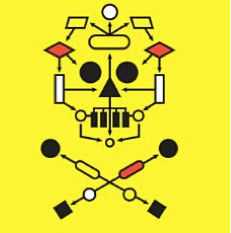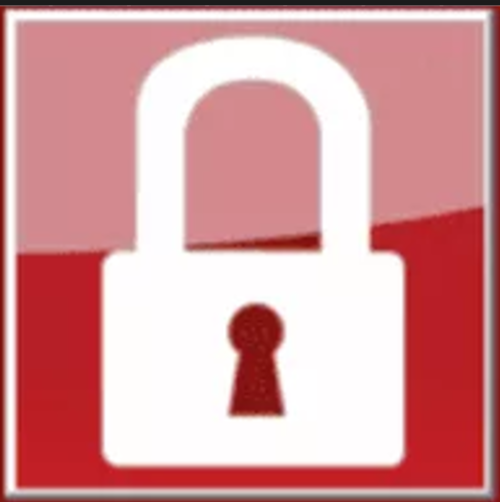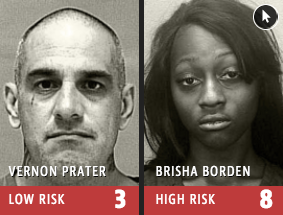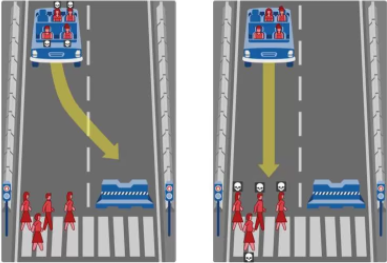
algorithms |

and |

models |

misbehaving? |
NETWORKED LIFE
Networked and Social Systems Engineering (NETS) 112
Fall 2017
Tuesdays and Thursdays 10:30-12, Berger Auditorium, Skirkanich Hall
Prof. Michael Kearns
Jump to the course schedule.
COURSE DESCRIPTION
Networked Life
looks at how our world is connected -- socially, strategically
and technologically -- and why it matters.
The answers to the questions above are related. They have been the subject of a fascinating intersection of disciplines, including computer science, physics, psychology, sociology, mathematics, economics. law and finance. Researchers from these areas all strive to quantify and explain the growing complexity and connectivity of the world around us, and they have begun to develop a rich new science along the way.
Networked Life will explore recent scientific efforts to explain social, economic and technological structures -- and the way these structures interact -- on many different scales, from the behavior of individuals or small groups to that of complex networks such as the Internet and the global economy.
This course covers computer science topics and other material that is mathematical, but all material will be presented in a way that is accessible to an educated audience with or without a strong technical background. The course is open to all majors and all levels, and is taught accordingly. There will be ample opportunities for those of a quantitative bent to dig deeper into the topics we examine. The majority of the course is grounded in scientific and mathematical findings of the past two decades or less (often much less).
Fall 2017 is the fourteenth offering of
Networked Life.
You can get a detailed sense for the course by visiting the extensive course web pages from past years:
[Fall 2016]
[Fall 2015]
[Fall 2014]
[Fall 2013]
[Fall 2012]
[Fall 2011; hosted by now-defunct startup, so lost forever]
[Spring 2010]
[Spring 2009]
[Spring 2008]
[Spring 2007]
[Spring 2006]
[Spring 2005]
[Spring 2004]
There was also a greatly condensed version of this class offered to the general public as part of the online education platform Coursera. While the Coursera version is not being offered online this semester, we will make the corresponding videos available throughout the Penn offering, and they are all gathered here.
Networked Life is the flagship course for Penn Engineering's Networked and Social Systems Engineering (NETS) program. Throughout the course we will foreshadow material that is covered in greater depth in later NETS program courses, but NETS 112 is entirely self-contained.
TEXTS AND READINGS
At least parts of the following four books will be required reading:
The links above are to the Amazon sites for the books, where they are available in inexpensive paperback and e-book formats. The paperback versions will also be available at the Penn bookstore.
In addition to readings from these texts, there will be frequent articles from the recent scientific and popular literature that will be provided directly on this web page at the appropriate points in the syllabus.
COURSE PERSONNEL
Prof. Michael Kearns, Course Instructor
mkearns@cis.upenn.edu
Levine Hall 509
Office hours: Tuesdays 12-1 PM (right after lecture), or by appointment
Adel Boyarsky,
Teaching Assistant
adelb@seas.upenn.edu
Office hours: Fridays 11-1 in the 5th floor
Levine bump space.
Samantha Grasso,
Teaching Assistant
grassos@sas.upenn.edu
Office hours: Wednesdays 12-2 in the 5th floor
Levine bump space.
Zach Schutzman,
Teaching Assistant
ianzach@seas.upenn.edu
Office hours: Thursdays 12-2 in the 5th floor
Levine bump space.
LECTURE LOCATIONS AND TIMES
Attendance at the main lectures is considered mandatory for all enrolled students. They are held Tuesdays and Thursdays 10:30-12 in Berger Auditorium of Skirkanich Hall. There are no recitations for the course.
COURSE PREREQUISITES
Networked Life has no formal prerequisites, and is meant to be accessible to a broad range of students across SEAS, the College, and Wharton. No computer programming background is required, but students should be comfortable using computers and the Web, and accessing resources on the Internet.
The course is open to all majors and all levels.
CURRICULUM REQUIREMENTS FULFILLED BY NETS 112
Please check with your academic advisor in these programs to confirm exactly how you can count the course.
COURSE FORMAT AND REQUIREMENTS
The main lectures for Networked Life will be in fairly traditional format, including class participation, discussion, and communal in-class experiments. PDF slides for all lectures will be provided, usually at least slightly in advance of the lecture itself.
There will be two or three homework assignments. These will include simple quantitative exercises, as well as essay questions, computer and web exercises. Collaboration on the homeworks is not permitted.
There will be a midterm, and a final exam. We may have a quiz or two as well.
It is anticipated that the homeworks/quizzes, midterm and final will each count for approximately a third of the overall grade.
Students are encouraged to bring articles, demos, web pages, news events, etc. that are relevant to course topics to the attention of Prof. Kearns. Extra credit will be given if the suggested material is used in the course (see the "Fourth Column" below).
Except for occasional hard-copy handouts distributed in lectures, all of the material for the course will be posted in the table below. Lecture slides, reading and homework assignments, in-class and out-of-class experiments, due dates, exam information, etc. will all be provided below. The materials posted are initially those from the last offering of the class, and will be gradually updated and possibly altered as we progress through the course. New materials and topics may be added as well. Reading and working ahead are encouraged, just be aware that things may change a bit as we proceed. It is every student's responsibility to monitor this schedule closely and regularly.
In the assigned readings below, "Watts", "Schelling", "Schneier" and "O'Neil" refer to the four required texts cited above. Other readings will be directly provided as links to PDF documents. Unless specified otherwise, you should generally try to complete the assigned reading during roughly the period spanned by the dates given in the same row of the table.
The lecture slides are all in PDF format, but they may often contain links to documents in other formats, including Postscript, JPEG, video, etc. In order to view all of the linked content you may need to be using a computer with viewers installed for these formats. Note that since slides are revised shortly in advance of each lecture date, links to future decks may not yet be active.
In the "DATES" column of the table below, our current place in the schedule will be highlighted in red.
"THE FOURTH COLUMN" will be used to put links to class-related materials from the popular media, the web, etc. Extra credit will be provided to those who send me such material if it is used.
| DATES | SLIDES | ASSIGNMENTS AND ANNOUNCEMENTS | THE FOURTH COLUMN |
|---|---|---|---|
|
Lectures: Tu Aug 29 Th Aug 31 |
Course Introduction and Overview [PDF] [PPT] (Rev. 8/28) |
Here is the Coursera course overview video. Here is a document containing a brief background survey and our second communal social experiment. Please print them out, complete them (which should only take a few minutes), and return them at the start of the second lecture (Thu Aug 31), as we will analyze the results of the social experiment on the fly in class.
|
As sample Fourth Column material, an oldie but goodie about contagious behavior.
|
|
Lectures: Tu Sep 5 |
Structural Properties of Networks: Introduction [PDF] [PPT] (Rev. 9/4) |
Please read this lightweight introduction to some course concepts via a network analysis of squash matches. Link to the Erdos Number Project website. Here are two Coursera videos that are related to this set of lectures: |
First-to-Field-Agent honors go to Annie Ghrist for this article on using network structure to spread fake news, and to Karthik Tadepalli for selfish neurons.
|
|
Lectures: Tu Sep 12 |
.
|
NO LECTURE. Prof Kearns traveling. |
.
|
|
Lectures: Th Sep 14 Tu Sep 19 Th Sep 21 Th Sep 28 |
Contagion in Networks [PDF] [PPT] (Rev. 9/14) |
The following three assigned papers will be discussed in lecture. At a minimum
you should know what the main results are, but try to understand as much as you can.
The Structural Virality of Online Diffusion. Goel, Anderson, Hofman, Watts. Structural Diversity in Social Contagion. Ugander, Backstrom, Marlow, Kleinberg. Emotion Shapes the Diffusion of Moralized Content in Social Networks. Bradya, Willsa, Josta, Tuckerb,Van Bavela. Can Cascades be Predicted? Cheng, Adamic, Dow, Kleinberg, Leskovec. Here is a link where you can download NetLogo, a very nice app with many scientific simulations and models. Throughout the term we'll be examining several of the simulations under the Networks section, including this one, which we'll play around in class with. Here is a Coursera video related to this topic:
|
Our first Repeat Offender is Karthik Tadepalli, who found this recent and highly relevant article on moral contagion. This is one of those occasional examples of an article so timely and relevant to our studies that I've made it an assigned reading to the left. From T.A. and now also F.A. Zach Schutzman, Erdos-Bacon-Sabbath numbers. Where will this all end? |
|
Lectures: Tu Sep 26 |
.
|
NO LECTURE. Prof Kearns traveling. |
.
|
|
Lectures: Th Sep 28 Tu Oct 3 Tu Oct 10 Th Oct 12 |
Navigation in Networks
[PDF] [PPT] (Rev. 9/28) |
During this set of lectures, we will discuss the following five articles. An Experimental Study of the Small World Problem, by J. Travers and S. Milgram. An Experimental Study of Search in Global Social Networks, by P. Dodds, R. Muhamad, and D. Watts. Navigation in a Small World, Kleinberg. Identity and Search in Social Networks, Watts, Dodds, Newman. The Scaling Laws of Human Travel, Brockmann, Hufnagel, Geisel. There are two Coursera videos associated with this lecture: Navigation in (Social) Networks Navigation in Networks, Revisited Here is Homework 1 (Rev. 10/12), which is due in hard-copy format at the start of lecture on Tuesday, October 17.
|
. |
|
Lectures: Th Oct 5 |
.
|
No lecture; Fall break. |
.
|
|
Lectures: Tu Oct 17 Th Oct 19 |
How Do Real Networks Look? [PDF] [PPT] (Rev. 10/17) |
For these lectures and the next set, you should read Chapters 2, 3 and 4 in "Six Degrees". (I recommend simply reading the book in its entirety, but will not require it.) We will also be discussing the following paper: Four Degrees of Separation. Backstrom et al, 2012. Here are Coursera videos associated with this set of lectures: How Do Real Networks Look? I. Heavy Tails How Do Real Networks Look? II. Small Diameter How Do Real Networks Look? III. Clustering of Connectivity
|
. |
|
Lectures: Tu Oct 24 |
MIDTERM EXAM. The midterm exam will be held during class, and will be closed book and closed note. It will cover all material to date. |
Here are solutions to Homework 1, To help you prepare for the midterm, here are past midterm examinations (some but not all with solutions) from 2016, 2015, 2014, 2013, 2012, 2011, 2010, 2009, 2008, 2007, and 2006. Please remember that course content and schedule changes from year to year, so these midterms definitely cover material we have not yet, or will not, discuss this term; and conversely, there are new topics we've introduced this term that are not represented on these past midterms. |
. |
|
Lectures: Th Oct 26 Tu Oct 31 |
Models of Network Formation
[PDF] [PPT] (Rev. 10/26) |
Coursera videos associated with these lectures; we will only discuss Erdos-Renyi and Preferential Attachment in class, but you are also responsible for the clustering models video: Models of Network Formation I. The Erdos-Renyi Model Models of Network Formation II. Clustering Models Models of Network Formation III. Preferential Attachment
|
.
|
|
Lectures: Tu Oct 31 Th Nov 2 |
Incentives and Collective Behavior
[PDF] [PPT] (Rev. 10/31) |
Read Schelling, "Micromotives and Macrobehavior", Chapters 1, 3 and 4. Coursera video associated with this lecture: Towards Rational Dynamics in Networks
|
. |
|
Lectures: Th Nov 2 Tu Nov 7 Th Nov 9 |
Introduction to (Networked) Game Theory
[PDF] [PPT] (Rev. 11/2) |
Coursera videos associated with this lecture: During the last two weeks of the course, we will discuss the assigned books "Data and Goliath" and "Weapons of Math Destruction". These books are not difficult, but I suggest you start reading them now so as not to be rushed at the last minute. Our examination of these books will be interactive and conversational, so you should be ready to participate in class. Homework 1 will be returned at the end of lecture on Nov. 7. The average score was 87.6 and the standard deviation was 12.9. If you have questions or concerns about grading, please first see the TA that graded the problem(s) you want to discuss: Samantha (problems 3 and 6), Adel (problems 2 and 5), Zach (problems 1 and 4). |
. |
|
Lectures: Tu Nov 14 Th Nov 16 Tu Nov 21 |
Networked Games: Coloring, Consensus and Voting; Network Formation Games
[PDF] [PPT] (Rev. 11/7) |
Read the following article associated with these lectures: Experiments in Social Computation, Coursera videos associated with these lectures: Games on Networks: Coloring and Consensus Games on Networks: Biased Voting Graded midterms will be returned at the end of lecture Nov. 14. The average was 78.11 and the standard deviation was 12.49. Here are solutions and grading guidelines for the midterm. If you have questions regarding the grading of your midterm, you should first see the TA(s) who graded the problem(s) in question.
|
. |
|
Tu Nov 28 Th Nov 30 |
Internet Economics
[PDF] [PPT] (Rev. 11/28) |
Coursera videos associated with these lectures:
Internet Games: I. Packet Routing Internet Games: II. Sponsored Search Here is Homework 2, due in hardcopy format on December 21. |
. |
|
Lectures: Tu Dec 5 Th Dec 7 |
In-class discussion (mandatory) of
"Data and Goliath" and
"Weapons of Math Destruction"
|
. |
.
|
|
We Dec 20 |
.
|
FINAL EXAM, 9-11AM, CLAUDIA COHEN HALL, ROOM G17 You can already learn the times of all of your final exams here. Here are some past final exams, some with solutions, to help you study. Please note that some of the questions are on topics we did not cover this year, and that we covered topics this year that are not represented on the exams. [2004] [2005] [2006] [2007] [2008] [2009] [2011] [2012] [2013] [2014] [2015] [2016] Comments and instructions on your HW2 essays: Please be reminded that the nature and content of your essay is relatively open-ended. We are primarily looking for evidence that you read and absorbed the main themes of both books; some comparisons and syntheses between them; and some originality in terms of relating these themes to the rest of the class, your own experiences, and other content/articles/ideas you may be familar with through other channels. See the assignment on the website for more detail and ideas. Let me first reiterate that you should not simply be writing for a targeted length; considerably more important are the stated desiderata for the actual content, both summarized below and in more detail in the HW2 document itself. However, I guesstimate that the format of that document is roughly 35 lines of roughly 12 words per line, which at 7-10 pages would yield a word count of approximately 3000 to 4200 words. As discussed in class, Homework 2 essays will now be submitted electronically. PLEASE READ AND FOLLOW ALL INSTRUCTIONS FOR SUBMISSION CAREFULLY.
|
.
|